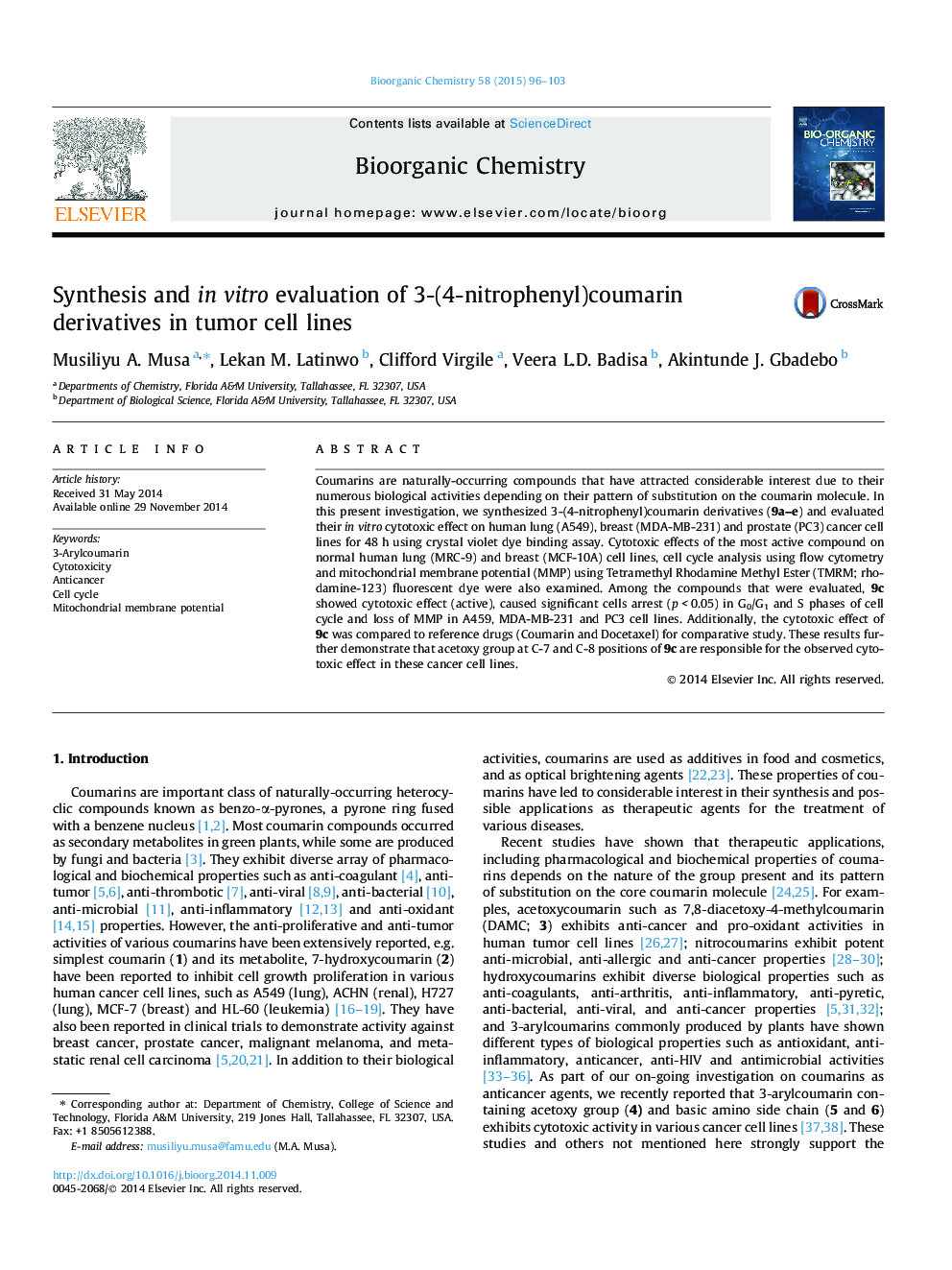| Article ID | Journal | Published Year | Pages | File Type |
|---|---|---|---|---|
| 1355619 | Bioorganic Chemistry | 2015 | 8 Pages |
•3-(4-Nitrophenyl)coumarin derivatives (9a–e) were synthesized.•9a–e were evaluated for in vitro cytotoxic effect in cancer cell lines.•9c bearing acetoxy group at C-7 and C-8 positions exhibited cytotoxic effect.•9c caused G0/G1 and S phases cell arrest and loss of MMP.
Coumarins are naturally-occurring compounds that have attracted considerable interest due to their numerous biological activities depending on their pattern of substitution on the coumarin molecule. In this present investigation, we synthesized 3-(4-nitrophenyl)coumarin derivatives (9a–e) and evaluated their in vitro cytotoxic effect on human lung (A549), breast (MDA-MB-231) and prostate (PC3) cancer cell lines for 48 h using crystal violet dye binding assay. Cytotoxic effects of the most active compound on normal human lung (MRC-9) and breast (MCF-10A) cell lines, cell cycle analysis using flow cytometry and mitochondrial membrane potential (MMP) using Tetramethyl Rhodamine Methyl Ester (TMRM; rhodamine-123) fluorescent dye were also examined. Among the compounds that were evaluated, 9c showed cytotoxic effect (active), caused significant cells arrest (p < 0.05) in G0/G1 and S phases of cell cycle and loss of MMP in A459, MDA-MB-231 and PC3 cell lines. Additionally, the cytotoxic effect of 9c was compared to reference drugs (Coumarin and Docetaxel) for comparative study. These results further demonstrate that acetoxy group at C-7 and C-8 positions of 9c are responsible for the observed cytotoxic effect in these cancer cell lines.
Graphical abstractFigure optionsDownload full-size imageDownload as PowerPoint slide
